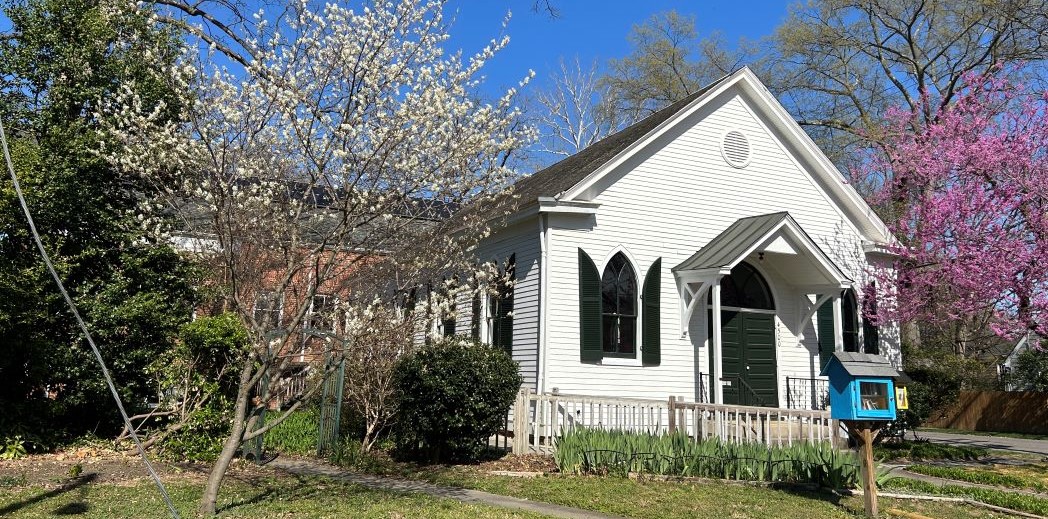George and Judith Winston were birthright Quakers who were active with Richmond area Quakers in the late 18th and early 19th centuries. George was a maker of bricks and a builder so he built the first Meetinghouse at 20th and Cary Street in 1797. This building no longer exists but a needlework sampler sewed by his daughter Mary in 1806 shows us the front and the back of the brick Meeting House. Records also show that the Meeting did not finish payment to George Winston for the 30 by 40-foot square building until 1816.

The house in the photograph was built by George Winston in Church Hill, built about 1810 and was probably used for his business.It was located between 25th and 26th and Broad and Grace Streets in the area we know today as Church Hill. At that time the area was known as Shed Town, perhaps because there were so many sheds in the backyards. Winston used the backyard for his brickyard. The Winstons became strong opponents of slavery and as a result, George did not hire slaves to work in his construction business. Instead he trained free black apprentices for the work. George and Judith may have lived here from 1810-1816 when they moved their residence to 2604 East Franklin Street.
George and Judith were originally members of and were married under the care of the White Oak Swamp Meeting about 15 miles out of Richmond in Henrico county. We believe that once they lived in Richmond and the Richmond Meeting was organized that they probably became active in the Richmond Meeting since it was more convenient. They were the parents of 14 children. Interestingly Judith though in 1810 was placed under the care of the White Oak Swamp Meeting for not attending meetings. She confessed that it was true and accepted the rebuke. However, she did not resume her attendance at meetings and she was condemned for having encouraged her daughter in going to plays and dances. She was dismissed from the Society on July 6, 1811. Judith may well have become disenchanted with her restricted life of constant pregnancy and felt that she wanted more for her daughters. She may have simply been too tired to continue to make the effort to attend meetings.
Henrico County court records show that George took seriously that he should not hold slaves and instead should prepare free black apprentices with job skills. Repeatedly in the records are agreements to teach an apprentice a trade. In June 1804, George Winston had placed with him, Daniel, a free, black, orphan boy to learn the trade and mystery of a house joiner. “Apprentice is to serve from the date thereof for a period of nine years, nine months and seven days or until Daniel arrives at the age of twenty-one.” The 1820 census listed twenty-one male free blacks ranging in age from 14-25 living and working with Winston. George was also a trustee of the Gravely Hill School, a Quaker institution for the education of blacks.
Business was good. George had begun to build houses and stores at a time when Richmond was growing rapidly. He built the block of stores at 14th and Main along with many other buildings. It is said that he also provided bricks and lime for the building of the state penitentiary and for the new Capitol. In 1817, he built the Jacob House, now located at Pine and Cary. This may be his last standing building.
The photograph is provided us courtesy of the Library of Virginia
Our thanks to Charles Pool, Virginia Davis, Gregg Kimball and the Library of Virginia for the above information and for the photograph.
